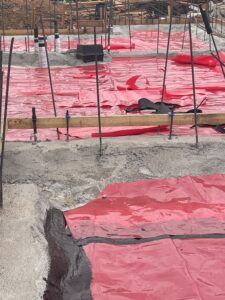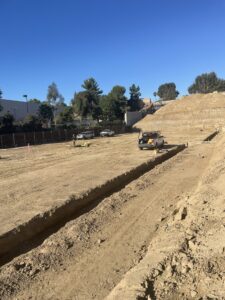The new film adaptation, “The Killer of the Flower Moon,” from the novel by David Grann, highlights the historical injustices suffered by the Osage people during the oil boom in Oklahoma. It also highlights the ongoing environmental and health concerns associated with oil and methane drilling. This article explores how the movie delves into the corruption tied to the growing oil business in the early 1900s. Plus, the present-day challenges tribal lands face, including abandoned wells, poisoned land, and toxic chemicals due to methane and oil drilling.
The Historical Context
During the early 20th century, the Osage Nation experienced immense wealth and prosperity due to the oil boom in Oklahoma. By 1930, there were more than three dozen Osage oil fields. These include the Avant, Barnsdall, and Skiatook, which existed during this time. The petroleum industry was booming, and the Osage people reaped the benefits of this newfound wealth. However, this prosperity came at a significant cost.
Greed and Injustice
Pursuing oil rights led to a reign of terror, as depicted in “The Killer of the Flower Moon.” Over 60 Osage tribal members were murdered in a quest for control over the valuable headlights. The greed and corruption surrounding the oil industry were deeply intertwined with these crimes. The movie exposes the dark underbelly of the oil boom, highlighting the injustices suffered by the Osage people.
Present-day environmental and Health Concerns 
The movie focuses on the historical narrative, as well as indirectly shedding light on the ongoing challenges faced today. The horrors of abandoned wells poisoned land, and toxic chemicals continue to haunt these communities long after the extraction companies have left. Once the oil and methane drilling operations are complete, the tribes are left to handle the environmental and health consequences. One of the major concerns of methane and oil drilling is the many orphaned wells, abandoned by the companies responsible for their drilling. These wells pose significant environmental risks, such as the release of methane, which is a greenhouse gas that goes into our atmosphere.
Methane emissions contribute to climate change and have detrimental effects on health and the environment. Moreover, the methane and oil drilling process itself involves the use of toxic chemicals, such as fracking fluids, which can contaminate the land and water sources. The long-term impacts of these chemicals on the health of tribal communities are a cause for great concern.
The Need for Mitigation
The present-day struggles tribal lands face, as depicted indirectly in “The Killer of the Flower Moon,” highlight the urgent need for mitigation efforts. Addressing vital environmental and health concerns associated with oil and methane drilling is a must for these communities and the preservation of their lands. Mitigation efforts should focus on the proper closure and reclamation of abandoned wells, as well as the implementation of strict regulations to prevent future environmental damage.
 Last Thoughts on “The Killer of the Flower Moon” on Methane and Oil Drilling
Last Thoughts on “The Killer of the Flower Moon” on Methane and Oil Drilling
“The Killer of the Flower Moon” tells the story of the Osage people’s historical injustices during the oil boom. It also indirectly sheds light on the ongoing environmental and health concerns faced by tribal lands today. The horrors of abandoned wells, poisoned land, and toxic chemicals affected these communities long after the extraction companies left. To ensure a more just and sustainable future, it is imperative to address these challenges through mitigation efforts. Measures include the proper closure and reclamation of abandoned wells, plus the implementation of strict regulations. We can strive for a future where tribal lands are protected. Where mitigation answers methane and oil drilling concerns to health and land exposure.
